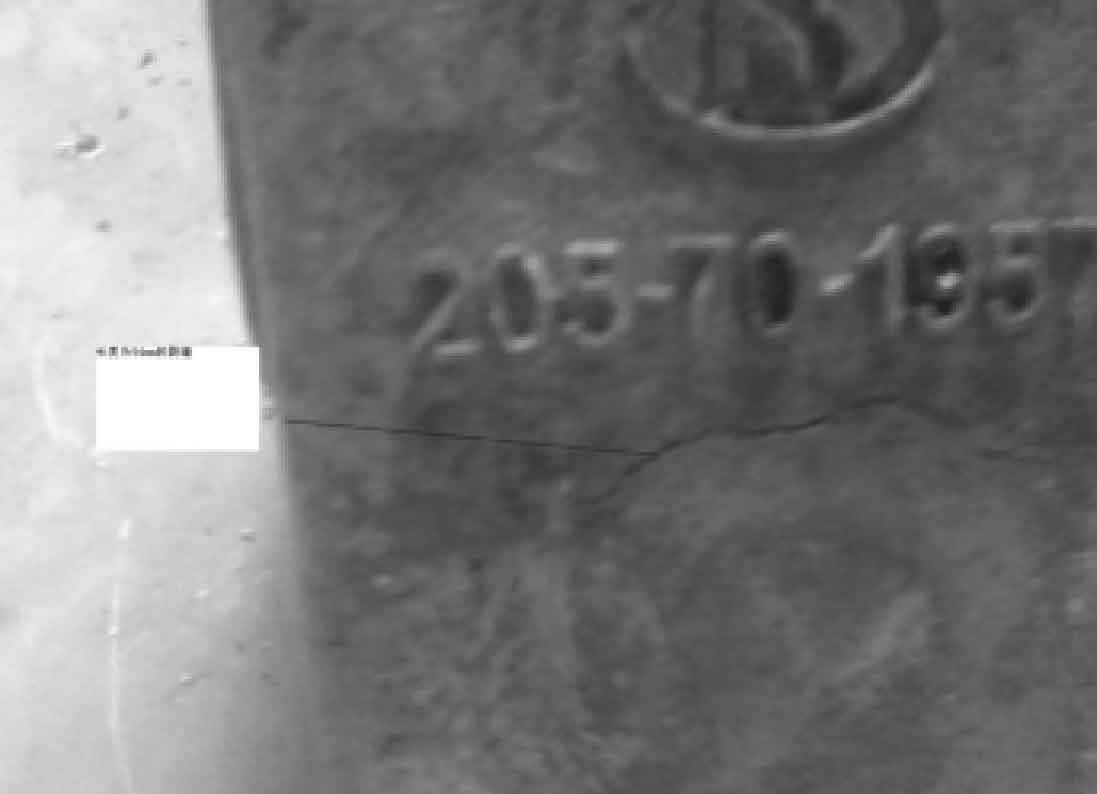1. Defect characteristics
Through the observation of the surface of the extruded bucket tooth casting, it is found that a transverse crack is found not far below the tooth cavity hole of the bucket tooth. Its size is 1.5mm × 54mm, see Figure 3. The crack section is seriously oxidized and has no metallic luster. The crack shape is tortuous and irregular. The crack width on the surface of the casting is large and presents tear shape. Therefore, it can be concluded that this kind of crack belongs to thermal crack in essence.
2. Cause analysis
The hot crack occurs in the solidification process when the extruded bucket tooth casting is in the state of plastic deformation. Under the action of heat transfer of the mold wall, the molten metal begins to solidify from the surface of the extruded bucket tooth casting. A large number of dendrites appear and form a complete skeleton, resulting in solid shrinkage. At this time, there is a layer of film between the dendrites that has not yet solidified. If the solidification of the extruded bucket tooth casting is not hindered, that is, the dendrite is not under the action of force, the extruded bucket tooth casting shrinks freely and the internal stress is gradually generated. If the shrinkage of the dendrite layer is hindered by the mold and core, and the shrinkage of the dendrite layer is affected by the tensile force, the tensile stress appears in the dendrite layer. When the tensile stress exceeds the liquid film strength limit, the dendrites will be pulled apart. If there is enough liquid metal around to flow into the tensile crack in time, the extruded bucket tooth casting will not produce thermal cracks, otherwise it will produce thermal cracks. The formation reason is mainly caused by the uneven shrinkage of the formed parts. In the process of part filling, the uneven distribution of die temperature field, low forming specific pressure and ineffective feeding will lead to uneven shrinkage of parts after forming. Because the wall thickness of the workpiece in the tooth cavity is relatively thin and the thermal conductivity is relatively good, this part solidifies before the hot spot, resulting in a large wrapping force of the workpiece on the tooth cavity core. In the process of core pulling, a tensile stress will be generated. At the same time, because the sprue has solidified at this time, it will produce a certain resistance effect on the workpiece in the direction of core pulling. Compared with the previous tensile stress, this resistance is a tensile stress in the opposite direction. If the effect of these two tensile stresses is greater than the yield stress of the material at high temperature, the workpiece will be pulled apart at the weak point and form a thermal crack, that is, the so-called shrinkage crack.
3. Preventive measures
According to the above analysis, the following measures can be taken to prevent the occurrence of thermal cracks: ① appropriately increase the thickness of tooth cavity core coating and increase concessions; ② Increase the size of the inner sprue and transfer the hot spot position to the inner sprue; ③ Adopt proper pressure holding time and increase the pressure holding time to 17s to ensure that the workpiece is just solidified when the mold is opened.

